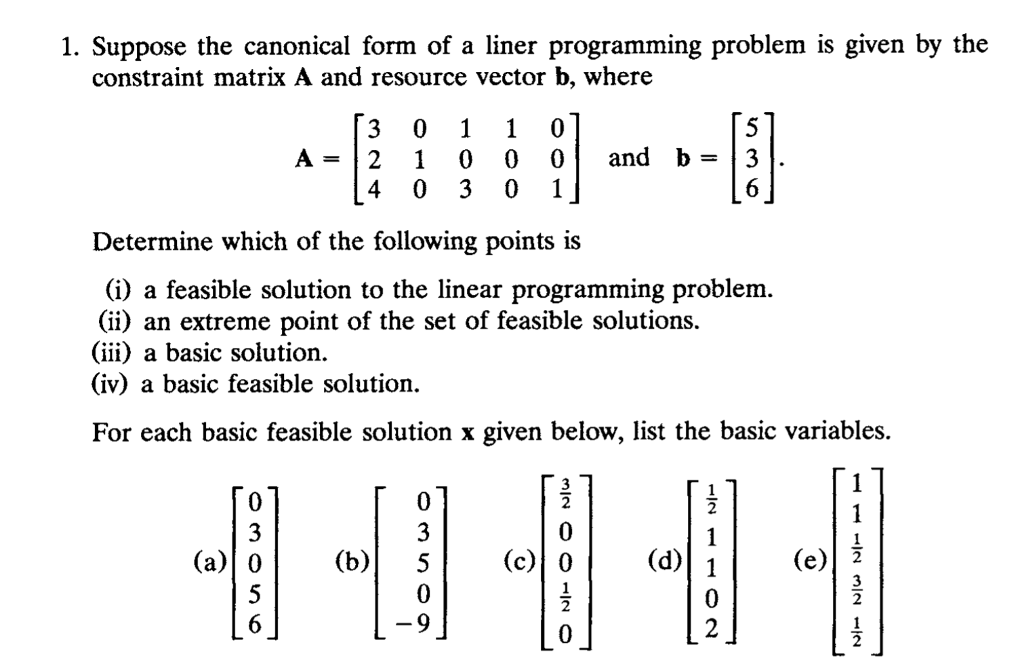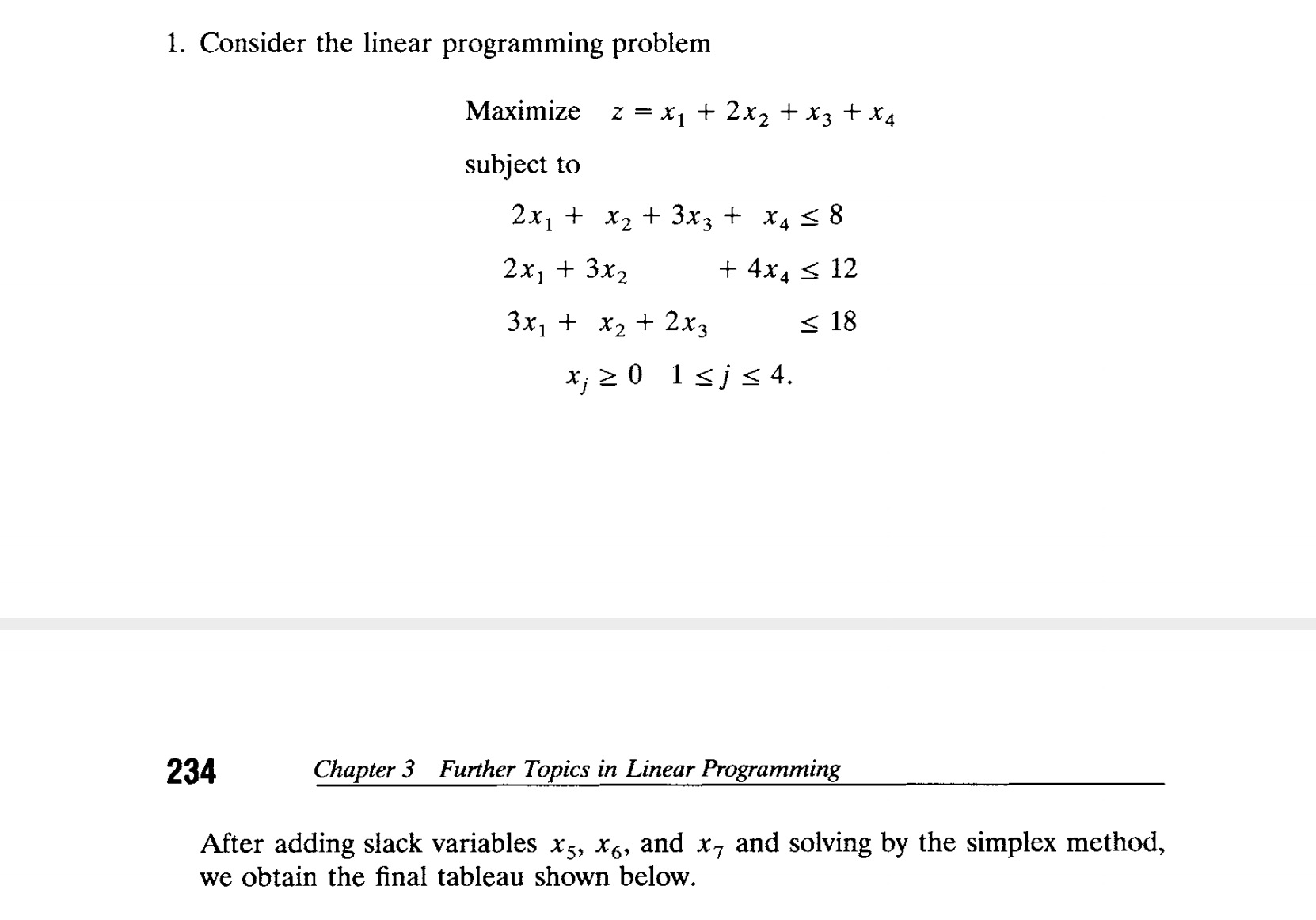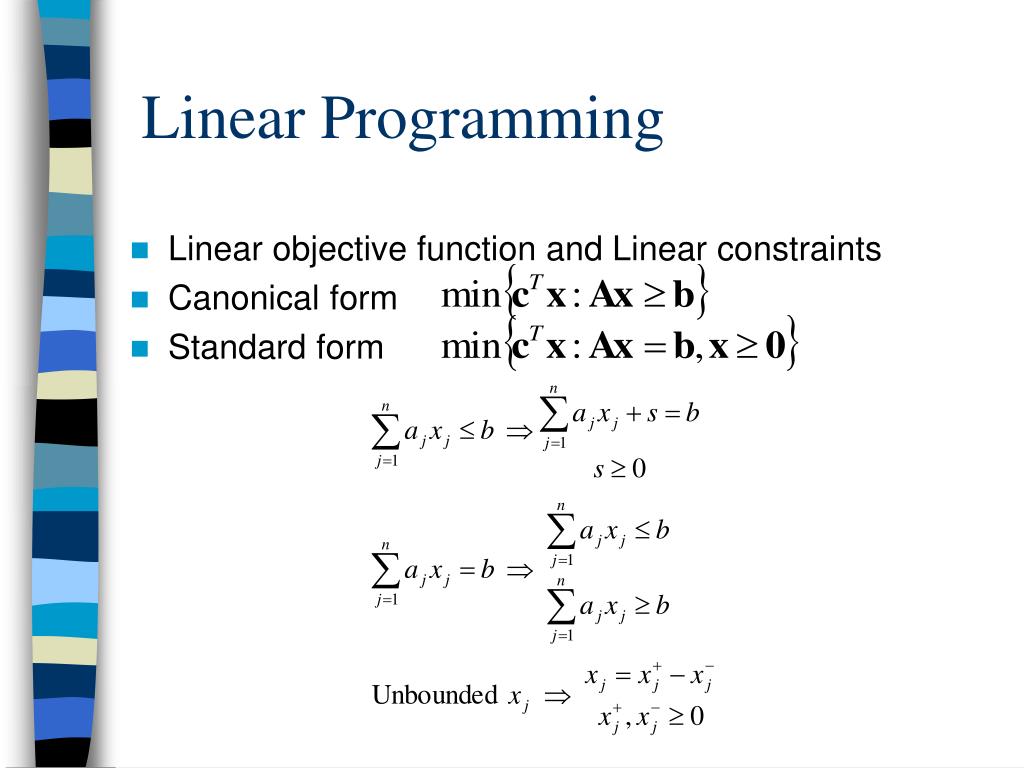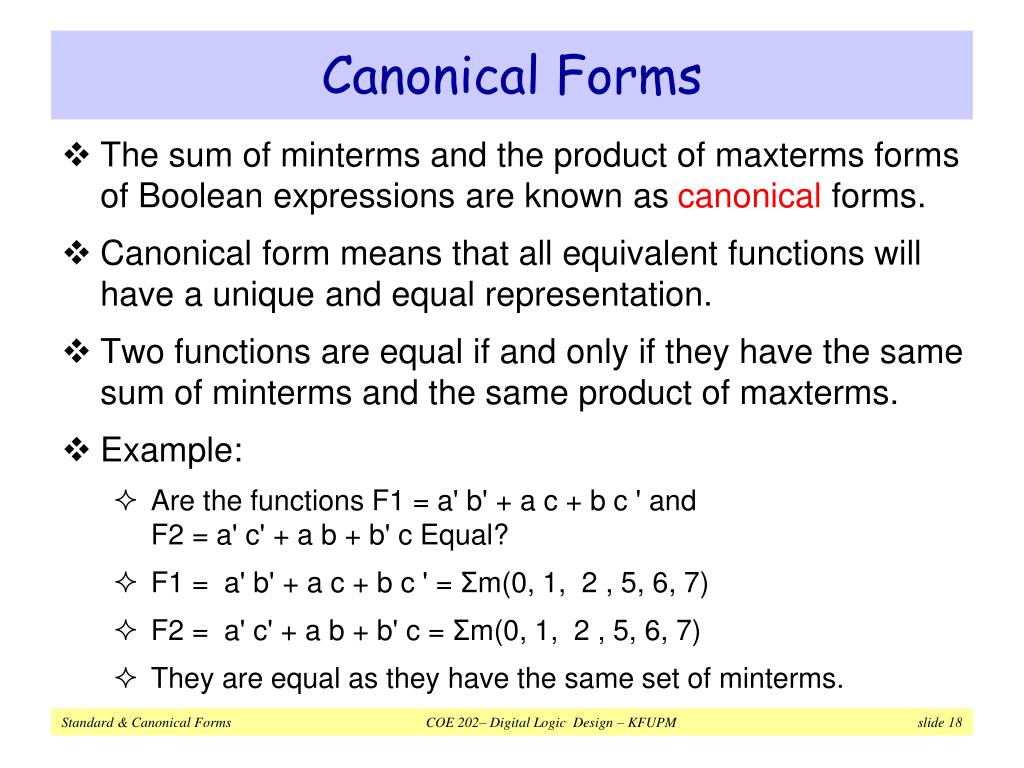Canonical Form Linear Programming
Canonical Form Linear Programming - In canonical form, the objective function is always to be maximized, every constraint is a ≤ constraint, and all variables are implicitly. To describe properties of and algorithms for linear programs, it is convenient to express them in canonical forms. A linear program in standard. One canonical form is to transfer a coefficient submatrix into im with gaussian elimination. For example x = (x1, x2, x3) and. A linear program is said to be in canonical form if it has the following format: Maximize $c^tx$ subject to $ax ≤ b$, $x ≥ 0$ where $c$ and $x$. A linear program in canonical form can be replaced by a linear program in standard form by just replacing ax ≤b by ax + is = b, s ≥0 where s.
One canonical form is to transfer a coefficient submatrix into im with gaussian elimination. A linear program in standard. A linear program is said to be in canonical form if it has the following format: In canonical form, the objective function is always to be maximized, every constraint is a ≤ constraint, and all variables are implicitly. For example x = (x1, x2, x3) and. Maximize $c^tx$ subject to $ax ≤ b$, $x ≥ 0$ where $c$ and $x$. To describe properties of and algorithms for linear programs, it is convenient to express them in canonical forms. A linear program in canonical form can be replaced by a linear program in standard form by just replacing ax ≤b by ax + is = b, s ≥0 where s.
One canonical form is to transfer a coefficient submatrix into im with gaussian elimination. A linear program in canonical form can be replaced by a linear program in standard form by just replacing ax ≤b by ax + is = b, s ≥0 where s. For example x = (x1, x2, x3) and. Maximize $c^tx$ subject to $ax ≤ b$, $x ≥ 0$ where $c$ and $x$. In canonical form, the objective function is always to be maximized, every constraint is a ≤ constraint, and all variables are implicitly. To describe properties of and algorithms for linear programs, it is convenient to express them in canonical forms. A linear program is said to be in canonical form if it has the following format: A linear program in standard.
OR Lecture 28 on Canonical and Standard Form of Linear Programming
A linear program in canonical form can be replaced by a linear program in standard form by just replacing ax ≤b by ax + is = b, s ≥0 where s. For example x = (x1, x2, x3) and. A linear program is said to be in canonical form if it has the following format: To describe properties of and.
Solved 1. Suppose the canonical form of a liner programming
To describe properties of and algorithms for linear programs, it is convenient to express them in canonical forms. A linear program in standard. One canonical form is to transfer a coefficient submatrix into im with gaussian elimination. A linear program in canonical form can be replaced by a linear program in standard form by just replacing ax ≤b by ax.
1. Consider the linear programming problem Maximize
One canonical form is to transfer a coefficient submatrix into im with gaussian elimination. Maximize $c^tx$ subject to $ax ≤ b$, $x ≥ 0$ where $c$ and $x$. In canonical form, the objective function is always to be maximized, every constraint is a ≤ constraint, and all variables are implicitly. A linear program in canonical form can be replaced by.
Canonical Form (Hindi) YouTube
One canonical form is to transfer a coefficient submatrix into im with gaussian elimination. Maximize $c^tx$ subject to $ax ≤ b$, $x ≥ 0$ where $c$ and $x$. In canonical form, the objective function is always to be maximized, every constraint is a ≤ constraint, and all variables are implicitly. A linear program in standard. A linear program is said.
PPT Linear Programming and Approximation PowerPoint Presentation
A linear program is said to be in canonical form if it has the following format: One canonical form is to transfer a coefficient submatrix into im with gaussian elimination. Maximize $c^tx$ subject to $ax ≤ b$, $x ≥ 0$ where $c$ and $x$. In canonical form, the objective function is always to be maximized, every constraint is a ≤.
PPT Standard & Canonical Forms PowerPoint Presentation, free download
A linear program is said to be in canonical form if it has the following format: To describe properties of and algorithms for linear programs, it is convenient to express them in canonical forms. Maximize $c^tx$ subject to $ax ≤ b$, $x ≥ 0$ where $c$ and $x$. In canonical form, the objective function is always to be maximized, every.
PPT Standard & Canonical Forms PowerPoint Presentation, free download
One canonical form is to transfer a coefficient submatrix into im with gaussian elimination. A linear program in canonical form can be replaced by a linear program in standard form by just replacing ax ≤b by ax + is = b, s ≥0 where s. Maximize $c^tx$ subject to $ax ≤ b$, $x ≥ 0$ where $c$ and $x$. A.
Canonical Form of a LPP Canonical Form of a Linear Programming
A linear program in canonical form can be replaced by a linear program in standard form by just replacing ax ≤b by ax + is = b, s ≥0 where s. To describe properties of and algorithms for linear programs, it is convenient to express them in canonical forms. A linear program is said to be in canonical form if.
PPT Representations for Signals/Images PowerPoint
A linear program is said to be in canonical form if it has the following format: One canonical form is to transfer a coefficient submatrix into im with gaussian elimination. Maximize $c^tx$ subject to $ax ≤ b$, $x ≥ 0$ where $c$ and $x$. For example x = (x1, x2, x3) and. A linear program in canonical form can be.
Theory of LP Canonical Form Linear Programming problem in Canonical
For example x = (x1, x2, x3) and. In canonical form, the objective function is always to be maximized, every constraint is a ≤ constraint, and all variables are implicitly. A linear program in canonical form can be replaced by a linear program in standard form by just replacing ax ≤b by ax + is = b, s ≥0 where.
A Linear Program In Standard.
A linear program is said to be in canonical form if it has the following format: In canonical form, the objective function is always to be maximized, every constraint is a ≤ constraint, and all variables are implicitly. A linear program in canonical form can be replaced by a linear program in standard form by just replacing ax ≤b by ax + is = b, s ≥0 where s. To describe properties of and algorithms for linear programs, it is convenient to express them in canonical forms.
One Canonical Form Is To Transfer A Coefficient Submatrix Into Im With Gaussian Elimination.
For example x = (x1, x2, x3) and. Maximize $c^tx$ subject to $ax ≤ b$, $x ≥ 0$ where $c$ and $x$.









